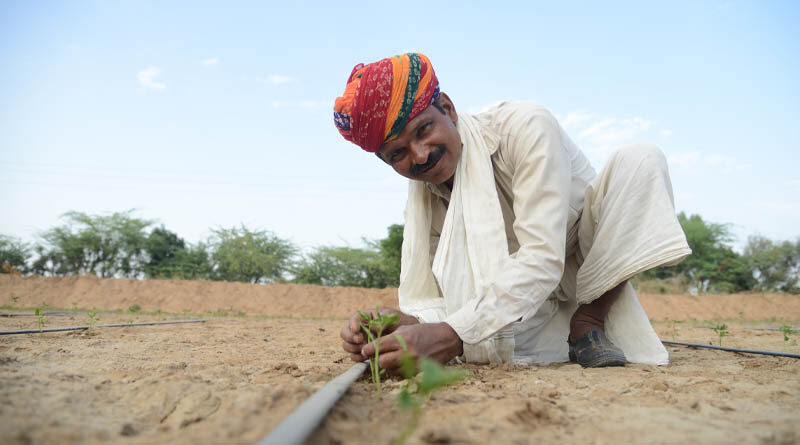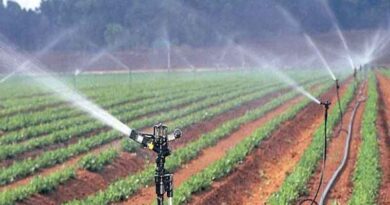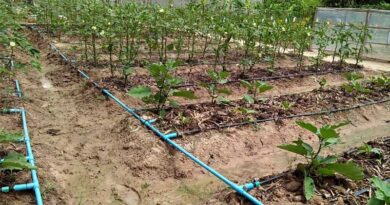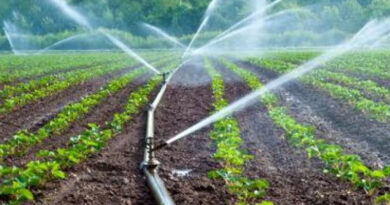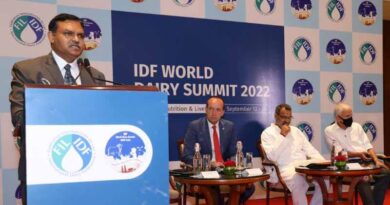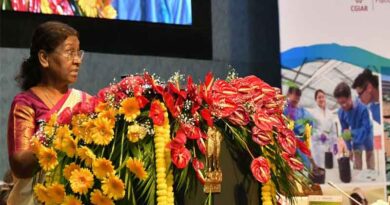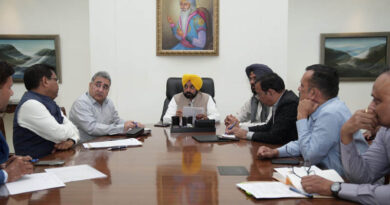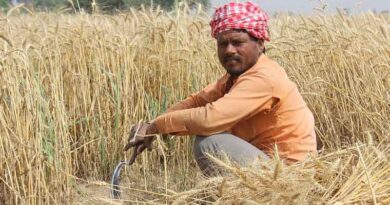It’s time we put a ‘Plug’ in our Thirsty Farming
Guest Author: Ms. Pearl Tiwari, Director, and CEO of Ambuja Cement Foundation
25 January 2023, New Delhi: It’s no secret – our very thirsty, outdated irrigation practices in Indian agriculture are guzzling 80% of India’s freshwater, and 70% of rapidly depleting groundwater with 60% of that water is wasted. Farmers and their flood irrigation, are at the core of India’s water woes.
And whilst many alternative solutions exist – drip irrigation, sprinkler irrigation, or alternate furrow irrigation – it’s difficult to change prevailing practice. Having flood-irrigated fields for generations, adopting a new method of irrigation is seen as a risk, by a largely hand-to-mouth sector of farmers who have limited capacity to invest in new technologies.
But the time has come for radical change.
What’s the Problem with Flood Irrigation?
Effective irrigation ensures that the correct amount of water reaches the root zone, whilst ensuring water is not lost due to runoff, evaporation, or deep percolation. The problem with flood irrigation is that it waters not only the plants but the rest of the field as well, delivering only 35-40% water use efficiency, as opposed to drip irrigation which has up to 90% efficiency.
Farming may seem to many, a ‘simple task’ – but growing high-yield, healthy crops are, in fact, a highly scientific and complicated process. It is important to ensure crops receive the right amount of water, at the right time and in the right stages of growth – a difficult task when reliant on unpredictable rain, as almost 61% of our farmers do. Climate change is forcing more and more farmers to irrigate.
The advent and evolution of irrigation infrastructure in the country, has meant available water for irrigation to apply on crops in a controlled manner helping bolster agricultural production and overcoming the many famines that have crippled the country in the past. But effective and efficient irrigation relies on so many factors which include topographical features like the type of soil and its slope, to ensure soil retains water; understanding the depth of the root zone of each crop so that irrigation water reaches the roots without flooding them; knowing the daily water consumption of various plants based on plant growth stages; and then there are environmental conditions to consider (air temperature, relative humidity, wind, and solar radiation). The list goes on.
But our farmers simply flood the field, often over or under-irrigating, and hoping for the best – most of that water evaporating, trickling away, and sinking into the ground. Sadly, much of the technical knowledge and know-how of how to apply water in a way that optimizes yield, whilst preserving this precious, diminishing, resource, is not known by farmers.
There is a need to dramatically bring the problems of flood irrigation into the spotlight for farmers – highlighting the negative impacts of flood irrigation on crop productivity and profits, to incentivize them to convert to more efficient methods. Flood irrigation does not only affect groundwater levels, it impacts crop productivity too. Farmers suffer 4 types of losses from this outdated irrigation practice:
· Overuse of limited water,
· Reduction in crop productivity,
· Increased cost of crop cultivation and use of fertilizer, and
· Limited irrigation area.
Barriers to Uptake of Alternative Irrigation Techniques
Micro irrigation systems provide optimum efficiency when it comes to the application of water directly to the root zone of crops. However, it requires a large initial investment to set up the infrastructure, which acts as the primary deterrent for most farmers. Despite the availability of Government subsidies, our small and marginal farmers are averse to putting their hands in their pockets to spend money (that they don’t have) on something they are not sure, will work.
Therefore the uptake of drip (2.13%) and sprinkler (3.30%) methods of irrigation are meager to their total potential, which is estimated to be 21.01 million hectares for drip and 50.22 million hectares of sprinkler irrigation. Here, handholding and capacity building are the need of the hour. Farmers need to be shown how to do it. They need demonstrations, visits to other farms, and collective education. Only then will they have the insights, awareness, and confidence to take the plunge, and reap the benefits.
Alternate furrow irrigation is another solution that, with proper irrigation intervals, saves irrigation water and results in high crop yields, with low irrigation costs. However, its adoption is limited thus far simply due to a lack of awareness. Again here, farmers simply need to be shown how to do it.
Conclusion
India’s agriculture sector is the largest consumer of water and sadly, its efficiency is very, very poor. Flood irrigation is wasting huge amounts of water, resulting in water consumption levels in India that are 2-3 times higher than in China, Brazil, and the US. And this is simply not sustainable.
Now, more than ever, we need to mobilize and support farmers to make shifts toward greater efficiency with water. Whilst schemes exist, there is a need for all stakeholders to beat the same drum, we need to quickly adopt alternative methods of irrigation, along with agricultural practices that help conserve soil moisture, whilst ensuring greater awareness among farmers, of the tragic future we as a country face, if we do not.
Also Read: Millets & Organics -2023: Three-day International Trade Fair starts at Thripuravasini, Bengaluru
(For Latest Agriculture News & Updates, follow Krishak Jagat on Google News)

